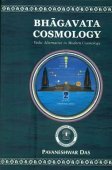Ilavrita, Ilāvṛta: 10 definitions
Introduction:
Ilavrita means something in Hinduism, Sanskrit, Marathi. If you want to know the exact meaning, history, etymology or English translation of this term then check out the descriptions on this page. Add your comment or reference to a book if you want to contribute to this summary article.
The Sanskrit term Ilāvṛta can be transliterated into English as Ilavrta or Ilavrita, using the IAST transliteration scheme (?).
In Hinduism
Purana and Itihasa (epic history)
Source: archive.org: Puranic EncyclopediaIlāvṛta (इलावृत) or Ilavṛtta (इलवृत्त):—A locality. (See Bhūguṇita).
Source: Cologne Digital Sanskrit Dictionaries: The Purana IndexIlāvṛta (इलावृत).—A son of Agnīdhra and apsaras Pūrvacitti; lord of Ilāvṛtam (Sumerumadhyama, Vāyu-purāṇa)*
- * Bhāgavata-purāṇa V. 2. 19; Brahmāṇḍa-purāṇa II. 14. 46; Vāyu-purāṇa 33. 39, 43; Viṣṇu-purāṇa II. 1. 16 and 20.

The Purana (पुराण, purāṇas) refers to Sanskrit literature preserving ancient India’s vast cultural history, including historical legends, religious ceremonies, various arts and sciences. The eighteen mahapuranas total over 400,000 shlokas (metrical couplets) and date to at least several centuries BCE.
Shaivism (Shaiva philosophy)
Source: Wisdom Library: ŚaivismIlāvṛta (इलावृत) refers to one of the seven regions (navakhaṇḍa) situated within Jambūdvīpa, according to Parākhyatantra 5.61. It is also known as Ilāvṛtakhaṇḍa. Jambūdvīpa is one of the seven continents situated within the world of the earth (pṛthivī). These continents are located above the seven pātālas and may contain even more sub-continents within them, are round in shape, and are encircled within seven concentric oceans.
According to the Parākhyatantra, “there was a divine apsaras named Ilā, possessed of beauty and youth; this lovely one was seen going about by the moon (amṛtarūpeṇa). He enveloped her there in his arms out of lust (rāgāt). That is why that place is called Ilāvṛta”.
In the middle of these nine regions (e.g., Ilāvṛta) is situated the golden mountain named Meru which rises above the surface of the earth by 84,000 yojanas while it penetrates the circle of the earth to a depth of sixteen yojanas.
The Parākhyatantra is an old Śaiva-siddhānta tantra dating from before the 10th century.

Shaiva (शैव, śaiva) or Shaivism (śaivism) represents a tradition of Hinduism worshiping Shiva as the supreme being. Closely related to Shaktism, Shaiva literature includes a range of scriptures, including Tantras, while the root of this tradition may be traced back to the ancient Vedas.
General definition (in Hinduism)
Source: Hindupedia: IlāvṛtaIlāvṛta is one of the nine divisions (varṣa) of Jambudvīpa. It was ruled by a king Ilāvṛta, son of Agnīdhra. It is derived from “irayā āvṛta” which means ‘Surrounded by water’. The ilāvṛta-varṣa lies surrounding the Sumeru mountain. It is bounded by Nīla mounain in the North, Niṣadha in the South, Malyavān in the West and mount Gandhamādana in the East.
Languages of India and abroad
Marathi-English dictionary
Source: DDSA: The Molesworth Marathi and English Dictionaryilāvṛta (इलावृत).—n S One of the nine varṣa or divisions of the world. It comprehends the most centrical part of the old continent.
Marathi is an Indo-European language having over 70 million native speakers people in (predominantly) Maharashtra India. Marathi, like many other Indo-Aryan languages, evolved from early forms of Prakrit, which itself is a subset of Sanskrit, one of the most ancient languages of the world.
Sanskrit dictionary
Source: Cologne Digital Sanskrit Dictionaries: Shabda-Sagara Sanskrit-English DictionaryIlāvṛta (इलावृत).—n.
(-taṃ) One of the nine Varshas or divisions of the known world, comprehending the highest and most centrical part of the old continent. E. ilā the earth, and āvṛta chosen: the fairest part of the globe.
Source: Cologne Digital Sanskrit Dictionaries: Monier-Williams Sanskrit-English Dictionary1) Ilāvṛta (इलावृत):—[from ilā] m. (ilāvṛta) Name of a son of Āgnīdhra (who received the Varṣa Ilāvṛta as his kingdom)
2) [=ilā-vṛta] [from ilāvṛta > ilā] n. one of the nine Varṣas or divisions of the known world (comprehending the highest and most central part of the old continent, cf. varṣa), [Mahābhārata; Bhāgavata-purāṇa; Mārkaṇḍeya-purāṇa; Viṣṇu-purāṇa etc.]
Source: Cologne Digital Sanskrit Dictionaries: Yates Sanskrit-English DictionaryIlāvṛta (इलावृत):—[ilā+vṛta] (taṃ) 1. n. A division of the earth, a ninth part of it.
[Sanskrit to German]
Sanskrit, also spelled संस्कृतम् (saṃskṛtam), is an ancient language of India commonly seen as the grandmother of the Indo-European language family (even English!). Closely allied with Prakrit and Pali, Sanskrit is more exhaustive in both grammar and terms and has the most extensive collection of literature in the world, greatly surpassing its sister-languages Greek and Latin.
See also (Relevant definitions)
Starts with: Ilavritakhanda, Ilavritavarsha.
Query error!
Full-text (+59): Ilavritavarsha, Jambudvipa, Gandhamadana, Ramyaka, Ilavritakhanda, Nishadha, Ilavarsha, Nila, Asitoda, Lata, Bharatavarsha, Ilavritta, Nilagiri, Ilavarta, Meru, Ilavirutam, Mahabhadra, Arunoda, Shveta, Agnidhra.
Relevant text
Search found 31 books and stories containing Ilavrita, Ila-vrita, Ilā-vṛta, Ila-vrta, Ilāvṛta, Ilavrta; (plurals include: Ilavritas, vritas, vṛtas, vrtas, Ilāvṛtas, Ilavrtas). You can also click to the full overview containing English textual excerpts. Below are direct links for the most relevant articles:
Garga Samhita (English) (by Danavir Goswami)
Verse 5.21.21 < [Chapter 21 - The Story of Śrī Nārada]
Kavyamimamsa of Rajasekhara (Study) (by Debabrata Barai)
Part 8.3 - Rājaśekhara’s concepts of Bhāratavarṣa (undivided india) < [Chapter 5 - Analyasis and Interpretations of the Kāvyamīmāṃsā]
Puranic Geography: Chatur-dvipa and Sapta-dvipa < [Purana, Volume 1, Part 2 (1960)]
Constitution of the Vamana-Purana Text < [Purana, Volume 9, Part 1 (1967)]
Priyavrata and Bharata < [Second Section]
Brahmanda Purana (by G.V. Tagare)
Chapter 17 - Varṣas of Jambūdvīpa, Kimpuruṣā, Hari and Ilāvṛta < [Section 2 - Anuṣaṅga-pāda]
Chapter 15 - The length and extent of the Earth: Description of Jambūdvīpa < [Section 2 - Anuṣaṅga-pāda]
Chapter 60 - The progeny of Vaivasvata Manu < [Section 3 - Upodghāta-pāda]
Markandeya Purana (by Frederick Eden Pargiter)
Related products
